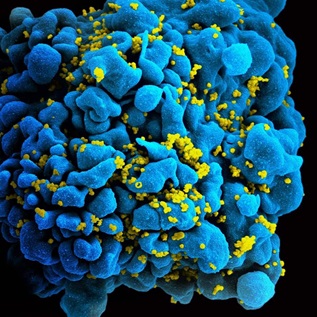Application of Biotechnology for Functional Foods
QUICK SUMMARY
The Pew Initiative on Food and Biotechnology final report provides an overview of functional foods - foods that are enhanced to provide health benefits beyond basic nutrition - and looks at the potential to develop these foods through the application of modern biotechnology.
Preface
Since the earliest days of agricultural biotechnology development, scientists have envisioned harnessing the power of genetic engineering to enhance nutritional and other properties of foods for consumer benefit. The first generation of agricultural biotechnology products to be commercialized, however, were more geared towards so-called input traits, genetic modifications that make insect, virus and weed control easier or more efficient. These first products have been rapidly adopted by U.S. farmers, and now account for the majority of soybeans, cotton and corn grown in the United States.
Agricultural biotechnology innovations aimed directly towards consumers, sometimes collectively referred to as output traits, have been a longer time in development. As the technology advances, and we learn more about the genes and biochemical pathways that control those attributes that could offer more direct consumer benefits, the long-awaited promise of genetically engineered food with more direct consumer benefits moves closer to reality. One category of potential products aimed at consumers is those products with added health benefits, also known as “functional foods.” The term functional food means different things to different people, but generally refers to foods that provide health benefits beyond basic nutrition.
This report looks at the potential to develop functional foods through the application of modern biotechnology. The first section describes some recent scientific advances that could lead to functional foods on grocery store shelves, and the second section analyzes the legal authorities that could govern the use of biotechnology-derived functional foods. The range of work being done on functional foods described in this report—from oils that product no trans fats or contain heart healthy omega-3 fatty acids, to cassava with increased protein content to help fight malnutrition in developing nations, to foods with enhanced levels of antioxidants—is impressive. This report is not intended to be an exhaustive catalog, however, but is rather a snapshot in time to give readers a sense of the kinds of products that may one day be available. It should also be noted that much of the work described here is still in preliminary stages, and may never make its way into consumer products for technical, economic or other reasons.
The analysis of relevant statutory authorities suggests that there is ample legal authority to cover the kinds of functional foods currently being explored in laboratories, but that different authorities may come into play for different kinds of foods and that the application of different authorities can have significant consequences for product developers, food manufacturers and consumers.
Different authorities impose different safety and labeling standards, have different requirements for regulatory review and clearance or approval, and could result in different levels of transparency to the public. The use of modern biotechnology to produce functional foods will not likely fundamentally challenge existing regulatory structures, but may challenge the boundaries of some regulatory classifications. The Pew Initiative on Food and Biotechnology's first report, Harvest on the Horizon (2001), provided a broad overview of what could be the “next generation” of genetically engineered agricultural products. It is fitting that this, the last of the Initiative's reports, turns again to look at a category of new products on the horizon.
We would like to acknowledge the contributions of Joyce A. Nettleton, who created the scientific review used in the development of this paper; and of Edward L. Korwek, for the review of regulatory authorities that could govern future functional foods.
Summary
The application of biotechnology to foods expressly to improve nutritional and health characteristics holds great potential, as demonstrated by many research accomplishments. Food enhancements cover a wide range, including improved fatty acid profiles for more heart healthy food oils, improved protein content and quality for better human and animal nutrition, increased vitamin and mineral levels to overcome widespread nutrient deficiencies throughout the world, and reduction in anti-nutritional substances that diminish food quality and can be toxic. On the horizon are efforts to increase the concentration of various antioxidants and functional substances such as phytosterols and probiotic bacteria. Improvements in the digestibility of animal feed through the reduction of phytic acid, gossypol and glycoalkaloids also have potential to enhance the safety of human foods. Although biotechnology has made some advances in reducing allergenic proteins in some foods, the complexity of allergenic responses, differences in sensitivity among people, and the presence of multiple allergens in a single food make this challenge particularly daunting. It appears that food oils with improved fatty acid profiles are the closest to reaching commercialization, once regulatory clearance has been obtained.
Just what form those regulatory clearances may take is not entirely certain. There is no regulatory scheme for functional food, per se, but functional food products are clearly subject to federal regulation. If a functional food product is marketed for a therapeutic purpose (e.g., to treat a disease), it will be subject to regulation as a “drug.” If a product is subject to regulation as a “food,” it may be further classified as a conventional food, dietary supplement, food for special dietary use (including infant formula), or medical food, again depending upon its intended use and other factors.
How a product is categorized has substantial implications for how it is marketed, the safety and labeling standards it must meet, and what requirements it must address for regulatory review and clearance or approval. A conventional food may be freely marketed on the basis of taste, and enjoys some flexibility regarding certain types of claims, such as structure/function claims, which need not be presubmitted to FDA nor accompanied by a disclaimer. Conventional food, including food ingredients, however, must meet safety standards requiring a “reasonable certainty of no harm.” The safety standard for dietary supplements is less stringent, but supplements are restricted to marketing in certain forms (e.g., as a tablet or powder, and in some circumstances, as a bar or liquid), and can make structure/function claims only if such claims are submitted to FDA and accompanied by the DSHEA disclaimer.
Food for special dietary use enjoys some flexibility as to nutrient content and health claim requirements, but the extent of this flexibility, and of the special dietary use category itself, is unclear and probably very fact-specific. Medical food is entitled to the most flexibility of all, but is permitted in extremely narrow and carefully defined circumstances. Certain food products, including meat and poultry, egg products, and animal feed, including pet food, are theoretically eligible for marketing in a functional food form. Such products are, however, subject to distinct regulatory requirements and oversight that may limit functional food opportunities as a practical matter. Animal feed, in particular, has been regulated by CVM in a manner that restricts the types of ingredients and promotional claims that may be used, despite the statutory classification of animal feed as “food.” The use of modern biotechnology to enhance human and other animal food will likely not change these regulatory paradigms, but may challenge the boundaries of some of the regulatory classifications.











